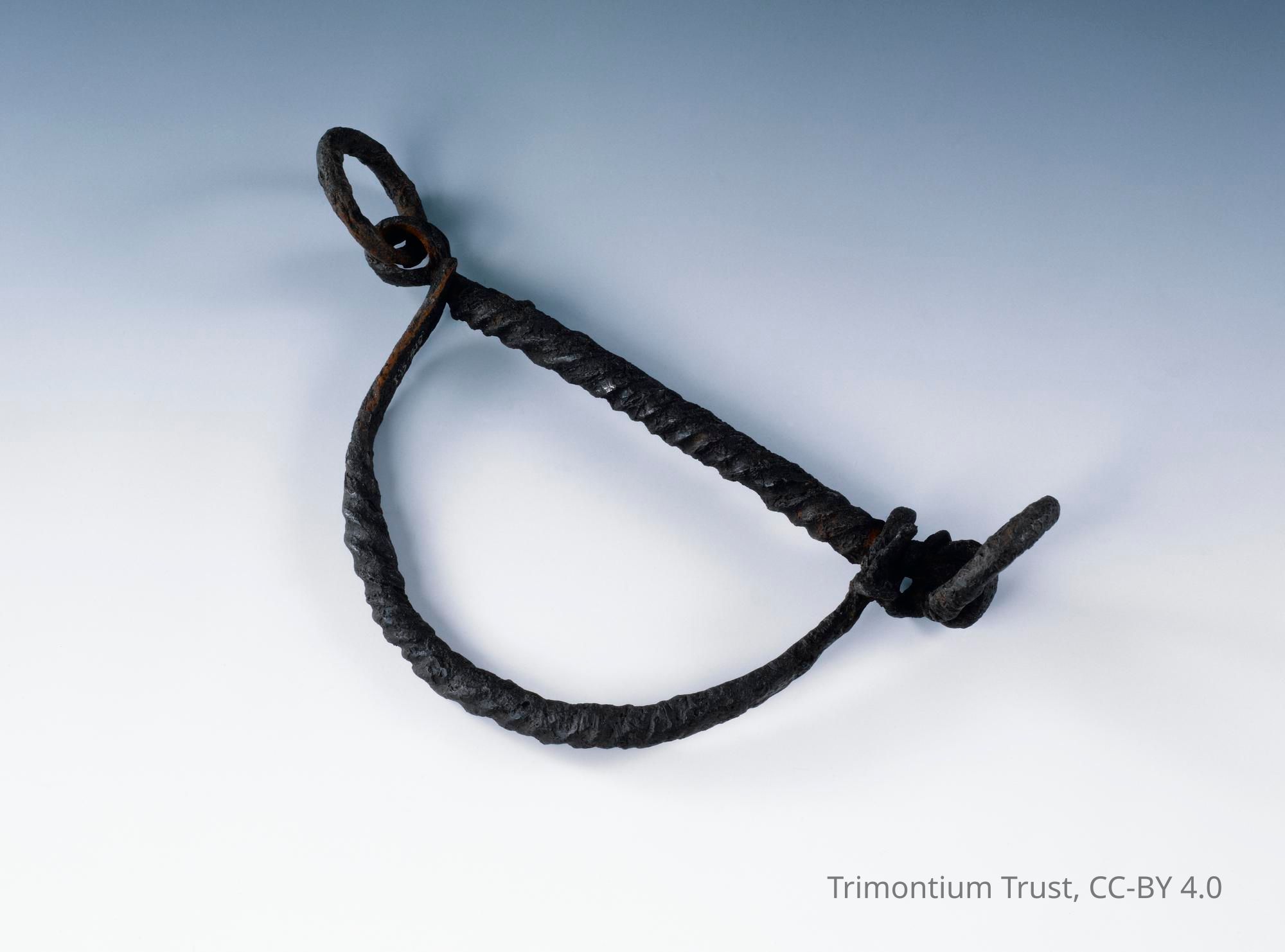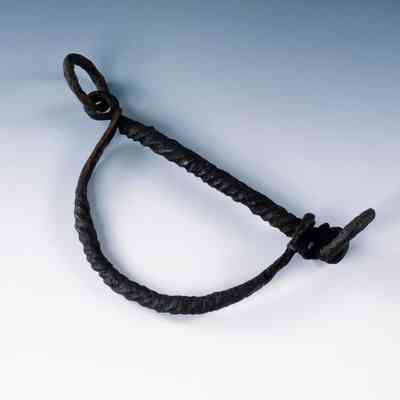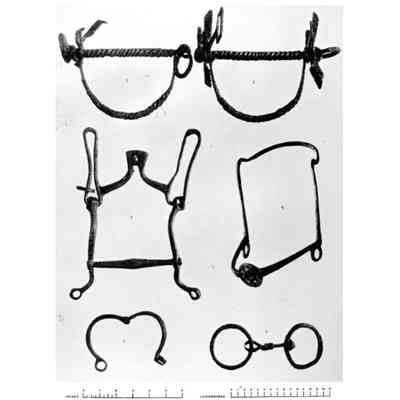Bridle Bit / Snaffle / Harness
Name/Title
Bridle Bit / Snaffle / HarnessEntry/Object ID
X.FRA 496.1Description
Roman snaffle bit of iron, one of two, from the Roman site at Newstead (Trimontium), 80 - 100 ADUse
This was used to help steer the horse with the help of the harness. "The bridle bit is unusually well preserved. It is a type known as a snaffle bit. It fitted in a horse's mouth and reins were attached to the rings. The Romans used several types of horse bits. Some were used for riding, some for pulling carts and wagons, while some others could serve both purposes." - From NMS ScranContext
Found in pit XXII during the excavation of James Curle.Collection
National Museums ScotlandCategory
Horse Equipment, Cavalry Equipment
Acquisition
Accession
X.FRA 496.1Source (if not Accessioned)
National Museums ScotlandMade/Created
Date made
80 - 100Time Period
Late 1st centuryEthnography
Cultural Region
Continent
EuropeCulture/Tribe
Romano British, Roman


